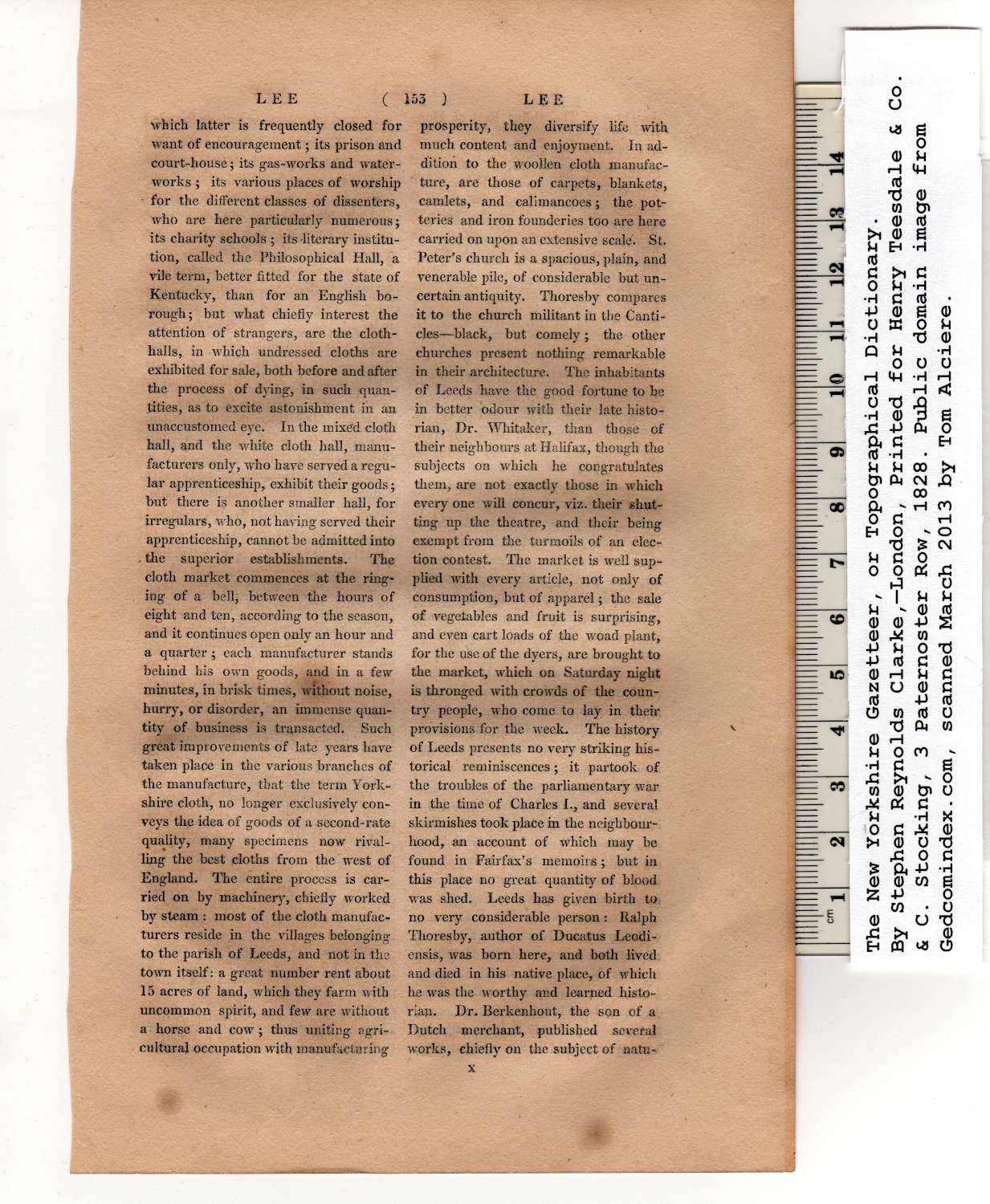|
which latter is frequently closed for
want of encouragement; its prison and
court-house; its gas-works and water-
works ; its various places of worship
for the different classes of dissenters,
who are here particularly numerous;
its charity schools ; its -literary institu-
tion, called the Philosophical Hall, a
vile term, better fitted for the state of
Kentucky, than for an English bo-
rough; but what chiefly interest the
attention of strangers, are the cloth -
halls, in which undressed cloths are
exhibited for sale, both before and after
the process of dying, in such quan-
tities, as to excite astonishment in an
unaccustomed eye. In the mixed cloth
hall, and the white cloth hall, manu-
facturers only, who have served a regu-
lar apprenticeship, exhibit their goods;
but there is another smaller hall, for
irregulars, who, not having served their
apprenticeship, cannot be admitted into
the superior establishments. The
cloth market commences at the ring-
ing of a bell, between the hours of
eight and ten, according to the season,
and it continues open only an hour and
a quarter ; each manufacturer stands
behind his own goods, and in a few
minutes, in brisk times, without noise,
hurry, or disorder, an immense quan-
tity of business is transacted. Such
great improvements of late years have
taken place in the various branches of
the manufacture, that the term York-
shire cloth, no longer exclusively con-
veys the idea of goods of a second-rate
quality, many specimens now rival-
ling the best cloths from the west of
England. The entire process is car-
ried on by machinery, chiefly worked
by steam : most of the cloth manufac-
turers reside in the villages belonging
to the parish of Leeds, and not in the
town itself: a great number rent about
15 acres of land, which they farm with
uncommon spirit, and few are without
a horse and cow; thus uniting agri-
cultural occupation with manufacturing
prosperity, they diversify life with
much content and enjoyment. In ad-
dition to the woollen cloth manufac-
ture, are those of carpets, blankets,
camlets, and calimancoes; the pot-
teries and iron founderies too are here
carried on upon an extensive scale. St.
Peter’s church is a spacious, plain, and
venerable pile, of considerable but un-
certain antiquity. Thoresby compares
it to the church militant in the Canti-
cles—black, but comely; the other
churches present nothing remarkable
in their architecture. The inhabitants
of Leeds have the good fortune to be
in better odour with their late histo-
rian, Dr. Whitaker, than those of
their neighbours at Halifax, though the
subjects on which he congratulates
them, are not exactly those in which
every one will concur, viz. their shut-
ting up the theatre, and their being
exempt from the turmoils of an elec-
tion contest. The market is well sup-
plied with every article, not only of
consumption, but of apparel; the sale
of vegetables and fruit is surprising,
and even cart loads of the woad plant,
for the use of the dyers, are brought to
the market, wdiich on Saturday night
is thronged with crowds of the coun-
try people, who come to lay in their
provisions for the wreek. The history
of Leeds presents no very striking his-
torical reminiscences; it partook of
the troubles of the parliamentary war
in the time of Charles I., and several
skirmishes took place in the neighbour-
hood, an account of which may be
found in Fairfax’s memoirs; but in
this place no great quantity of bioGd
w7as shed. Leeds has given birth to
no very considerable person: Ralph
Thoresby, author of Ducatus Leodi-
ensis, was born here, and both lived
and died in his native place, of which
he was the worthy and learned histo-
rian. Dr. Berkenhout, the son of a
Dutch merchant, published several
wrorks, chiefly on the subject of natu- |
|
